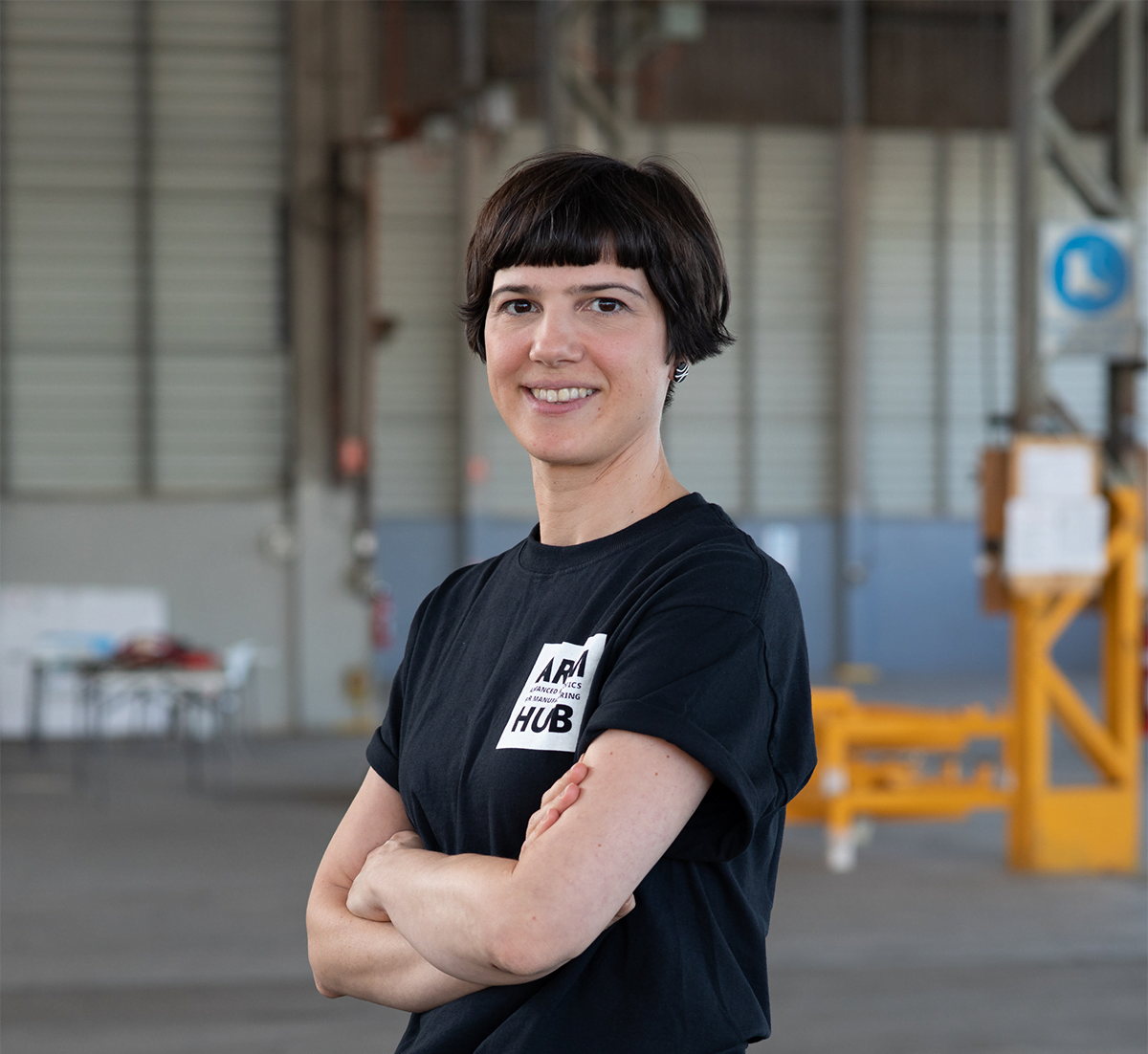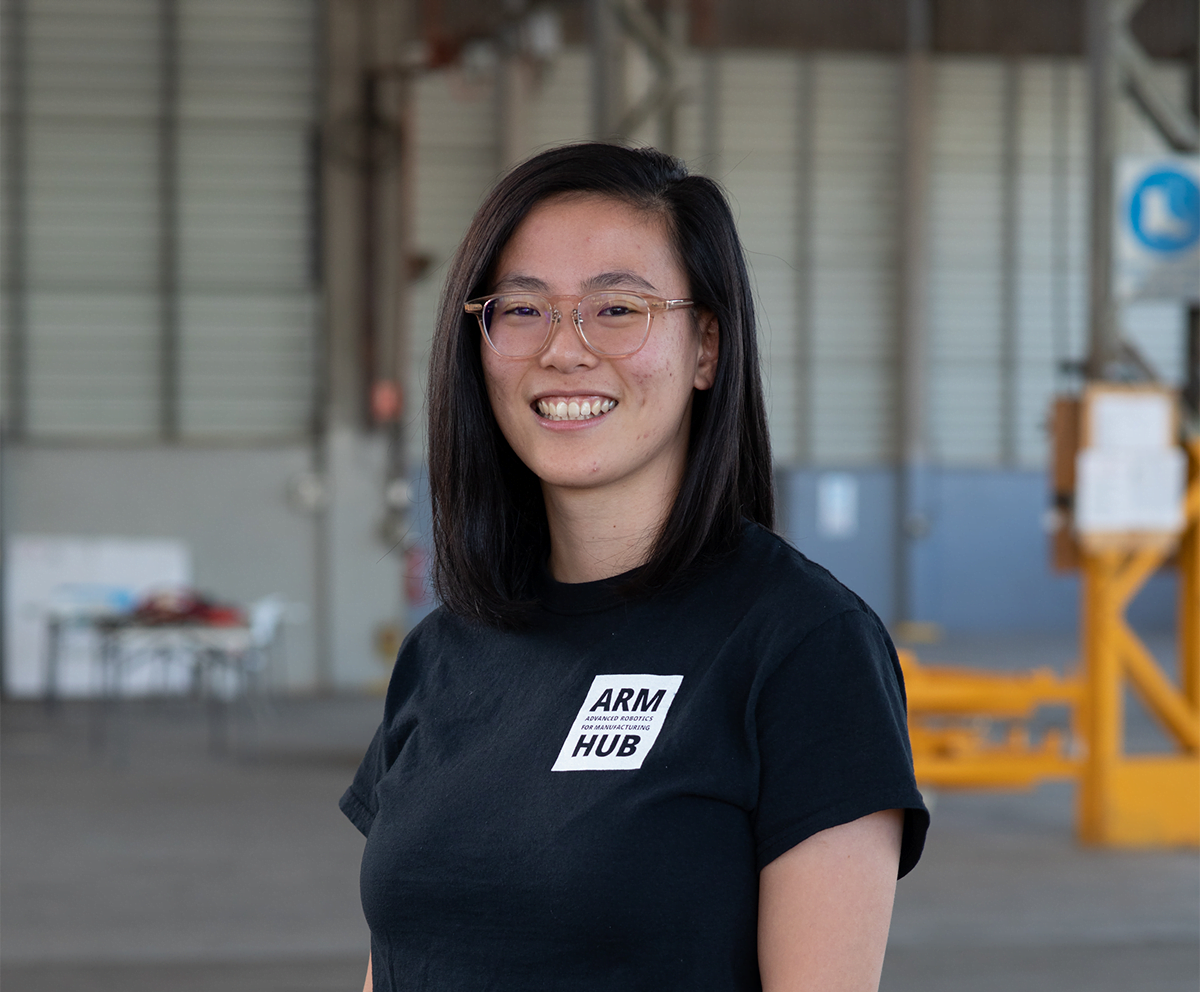For International Women’s Day in early March 2020, members of QUT’s Design Robotics team, Dr Muge Belek Fialho Teixeira, Amelia Luu and Dr Cori Stewart, participated in panel discussions focusing on women’s careers. The following reflections on their career journeys and interest in Design Robotics were inspired by the conversations at these events.
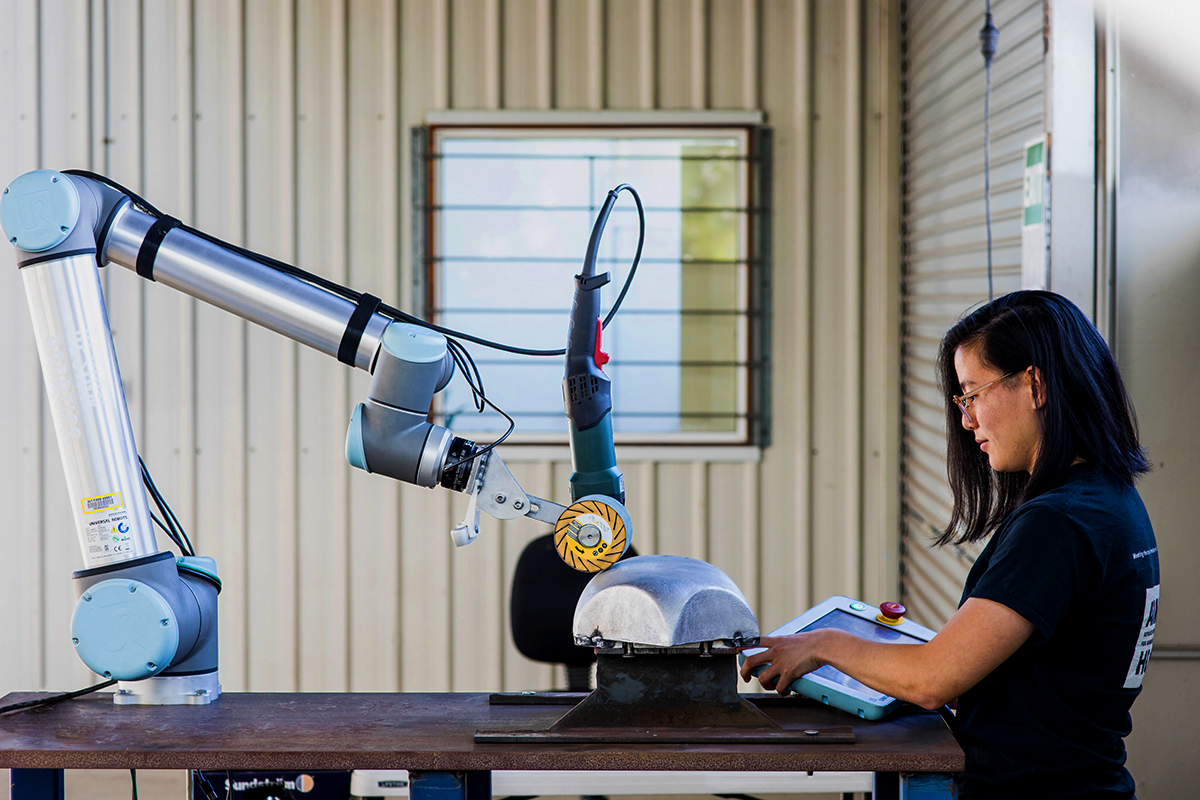
Design Robotics is a collaboration between QUT, the IMCRC, RMIT University and UAP (Urban Art Projects) that merges existing robotic technologies and design-led manufacturing. The project explores the development of innovative robotic vision systems and software user-interfaces to expand the possibilities in mass-customised manufacturing applications. A key part of the research collaboration is the sharing of project knowledge and outcomes through the Design Robotics Open Innovation Network. The network works to understand the current and future needs of the manufacturing industry, as well as provide a platform for engagement and education about the possibilities of design robotics.
ARM Hub grew out of the Design Robotics’ Open Innovation Network to support a wider cross section of industry in Australia undergo industrial transformation. The ARM Hub is a not-for-profit company established with $18 million from industry, research institutions and governments. The company has a focus on supporting SMEs and facilitates businesses gain access to world-class advanced robotics and design-led manufacturing expertise, within a broader program of Industry 4.0 adoption and R&D.
Dr Muge Belek Fialho Teixeira
Dr Muge Belek Fialho Teixeira is a Senior Lecturer in QUT Interior Architecture. At the same time, she is a creative maker and transdisciplinary designer with specialisations in advanced manufacturing, digital fabrication and parametric design. She is also one of the Chief Investigators of QUT’s Design Robotics project and ARM Hub.
First job
My first job was volunteering at a music festival in Istanbul. I am originally from Istanbul, and the Istanbul Music Festival was one of the most inspiring music events in the city. My first professional job was working in an architectural office as an intern. I remember spending all the summer going through their material library, sorting and updating the dusty shelves full of various architectural materials and catalogues. There wasn’t Material ConneXion at the time, so the only way to find out about materials was to give the companies a call and ask for a postal delivery.
Career moments
I had several pivotal points in my career. The first one was my move to London and studying at the Architectural Association (AA) Design Research Laboratory. It changed my life in many ways: one, I got to meet my partner in life and work; and the other, I got to work with one of the most influential women in the history of architecture, Zaha Hadid.
The second pivotal point in my career was my move to Santa Barbara to UCSB, where I got to work in a very transdisciplinary environment. During my PhD, I spent two years in Translab researching immersive environments and acoustics, under the supervision of Markus Novak at UCSB Media Arts and Technology program. I had the opportunity to work with inspiring people such as Yutaka Makino, Haru Hyunkyung Ji, Graham Wakefield and Mark-David Hosale.
My last pivotal point is the move to Brisbane and beginning to work with the QUT Design Robotics Project.
Challenges
Juggling work and life balance is one of the greatest challenges in our field. As a woman, if you want to become a mother, you need to have career breaks. This has a huge impact on the progress of your career, or the people’s perception of what you can or can’t do. For me, my partner is the greatest supporter to help me navigate this. He is always there for me and supports me in achieving my goals. Also, here in Australia, there are special support programs and exemptions for female academics to progress with their careers. As women, we shouldn’t give up on our dreams and seek opportunities and mentors that support us in achieving them.
Wishlist for Design Robotics
More support for women through flexible work hours; professional development support through leadership courses, mentoring and training; allowing younger generations to be exposed to the potentials of design robotics through STEAM (Science, Technology, Engineering, Arts and Maths) workshops.
Inspirations
My biggest inspiration was Zaha Hadid. My background is in architecture, and as a profession, architecture is also a very male-dominant world. In fact, it has been affected by the #MeToo movement immensely. As an Iraqi woman, who had migrated to the UK in the early 70s, Zaha Hadid later became British and was appointed Dame Commander of the Order of the British Empire (DBE). She was the first woman to win the Pritzker prize. She was an influential and inspiring woman and I was very lucky to work with her, right after graduating from the AA.
The importance of visibility
My current research takes place in the manufacturing industry, which as you might know is a very male-dominant industry. Therefore, it is important to represent women in this industry by being present at events such as “Women in Manufacturing Breakfasts”, Women in Technology platforms, etc…
As an academic, there are many ways women are supported, especially in QUT. QUT is part of an initiative called “The Athena SWAN Accreditation Framework”, which is part of SAGE (Science in Australia Gender Equity) and supports female researchers/ academics by providing special funding, organising Women in Stem workshops, writing retreats. Currently, I receive a grant from the QUT Women in Research Grant worth $10,000 for conducting research on Robotic Clay Cutting. I believe it is important to get stronger as a woman, so that we can mentor and support younger women to be more successful.
The change we need
I believe we should support each other and grow together. In the QUT Design Robotics research group, we have amazing women and men who mentor, guide and support one another. So far, it has been an amazing environment to work in. In general, women need to put aside negative competition and support each other more. We need to know that the more we share, the better we will all get from this collective sharing environment.
Advice to younger women
Ignore prejudices on what you can do. Focus on what you want to do and what you want to learn to be the best in your field. Surround yourself with people who are supportive and positive and keep yourself away from those who are negative and self-centred.
Believe in yourself! Women are strong and empowering! Step up with your dreams!
Amelia Luu
Amelia Luu is a mechatronics engineer within QUT’s Design Robotics project, where she works with industry partner UAP, a large-scale art manufacturing company, researching how to embed robotics into their workflow. I am currently developing an autonomous system to linish cast aluminium pieces.
First job
The first job I ever had was in high school working at a little juice bar in the city. I have a vivid memory of them letting 15-year old me use a machete to slice a watermelon. It was amazing fun and a great first introduction to a working environment!
My first STEM-related job was during my Mechatronic Engineering Bachelor’s degree. I worked with a research group in QUT named Biofabrication and Tissue Morphology, a lab run by Professor Mia Woodruff. They are researching advanced manufacturing in the context of fabricating patient-specific biomedical solutions. An example of this was my final year project where I designed a photogrammetry rig to help instantaneously capture a person’s face in order to 3D print custom moulds for transparent facial mask fabrication used in burn treatments. This is the kind of work that led me to custom manufacturing in Design Robotics.
Career moments
I was always interested in science, and biology in particular, and honestly chose engineering on a whim due to my general interest in STEM topics. At the end of my first year, I came across a TED talk that made all the difference: Hugh Herr’s work in bionics. He is an Associate Professor currently leading a Biomechatronics group at MIT. In this TED talk, he presented their work that helped a dancer who had lost her leg in the Boston bombings perform again. It was this TED talk and Herr’s passion that inspired me to pursue a career that could combine science, assistive technology and engineering together.
Challenges
There are definitely challenges with being a young Asian female in a white male-dominated industry, though I believe most of these challenges are a result of their unconscious bias. Rarely will people directly admit they have less regard for me because I am a woman. Instead, the challenges typically show up in more subtle or passive aggressive ways. For instance, despite being brought on a project as the only robotics expert, my advice was never trusted, always second guessed and was only taken seriously if another man agreed with me. Another example would be when I was in a discussion with a male colleague and a client. Even though I was the one leading the discussion and facilitating the meeting, the client always answered my questions to the male colleague and never directly faced or made eye contact with me. So, it always feels like there is a constant battle for a basic level of respect.
What has helped me navigate all of this is having a network of people to talk about it with. The Design Robotics team has been great for this, as everybody is incredibly supportive and open for these difficult discussions.
Wishlist for Design Robotics
I hope that we continue working towards getting better representation across the board, and for more women in senior leadership positions. I also aspire for this industry to continue being open towards multi-disciplinary collaborations as that’s where I believe the more meaningful and higher impact projects begin and flourish.
Inspirations
All the women involved with Design Robotics are inspiring as they are all doing amazing jobs and breaking glass ceilings in their respective fields, which is wonderful to see! Another local that comes to mind is Marita Cheng; I first came across her as the founder of Robogals. She won the Young Australian of the Year award in 2012, has been recognised on various influential lists, and has done a lot in the robotics industry.
The importance of visibility
The first thing I think of is representation. Growing up, Asians were stereotypically represented as the nerd with no friends in Western media. I rarely saw an Asian woman, let alone an Asian person climbing career ladders, being CEOs or living a life similar to what I currently have. However, this is definitely changing. With movies like Crazy Rich Asians and the general rise of Asian actors in Western media, there is now a push for representation of Asian people and women in all aspects of life. Representation is important because it positively impacts people to see various potential versions of yourself, and empowers them to pursue avenues that they may not have realised were available to them.
The change we need
I believe that workplaces should be working harder to foster an environment where everybody’s voice can be heard regardless of gender or position. Inclusivity and diversity are the pillars of innovation. Ultimately, the responsibility of supporting women does not only fall on women and I think that everybody – especially people in power – should also regularly check in on their unconscious bias when making decisions.
Advice to younger women
Truly learn how to back yourself, as I think it’s ingrained in women from a young age to doubt ourselves. It’s important to remind yourself that it’s okay to ask for help and I have found that building a supportive network where you feel safe to share both the positive and uncomfortable feelings has been invaluable.
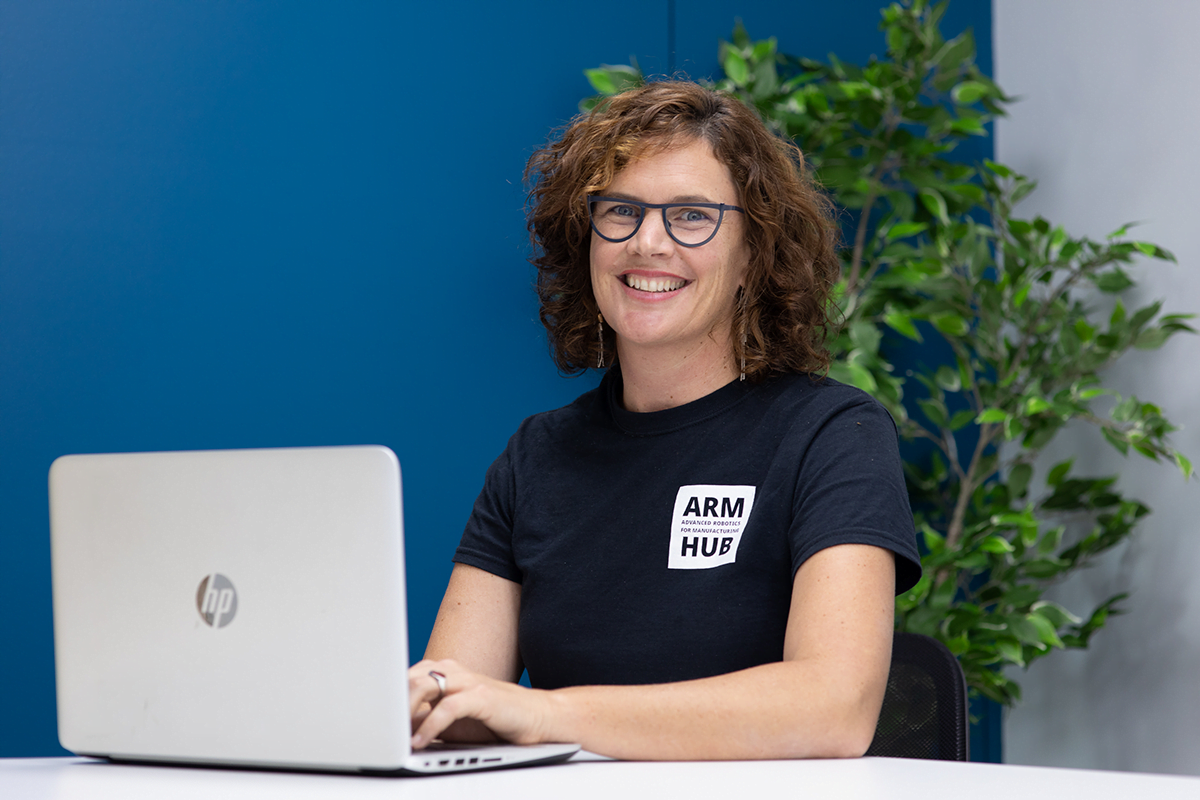
Dr Cori Stewart
Dr Cori Stewart is currently the CEO of ARM Hub, Associate Professor at QUT and a Chief Investigator on the Design Robotics project. The opportunity for Design Robotics was triggered from her relationship with UAP, which led to QUT developing the Design Robotics team.
First job
Like many of us in our group, I actually started out as a visual artist and did a lot of writing for newspapers about art as well. When I was about 25, I successfully applied to a Youth Arts Mentorship program. At the same time, I did an arts, culture and media policy degree. And then I went into the Brisbane City Council and became a Creative City policy officer. I was doing three things at once – just because I like to do it all.
Career moments
Getting into the Youth Arts mentorship program at the time was extraordinary as it was a paid mentorship for the better part of a year. We were teamed up with mentors and I got to understand how decisions on funding and policy settings were made and continue as a visual artist at the time.
Later I was appointed as the Creative City Policy Officer with the city council and it was just heaven for me: it was regular pay, and I got to work in arts and culture while cutting my teeth in managing politics and policy making. We wrote Brisbane’s Creative City Policy, which was a piece of work that remains important to me. I did my Masters degree on that and then a PhD. But in the Creative City policy officer role, I was in a terrific team, had the ability to learn, and could take the initiative to shape things. I had complete ownership of that job, which I lived and breathed for some time.
It’s also been great to watch the Design Robotics project flourish with a great number of people and diversity amongst us. It has become a touch point of what good collaboration looks like for many people, both in the project and outside it.
Challenges
I have mostly worked in industries where there were very few jobs at the top to aspire to. It has been a real challenge. It was never “Hey, this job’s for you” or “we’re thinking about you for this”. So, there is a lot of creating things from the ground up, like the ARM Hub. So, what might be a marker for me is when leaders of companies as well as research leaders bring opportunities to the ARM Hub, instead of me (and others) doing all that intense relationship development to make each opportunity happen. It would be especially significant and incredibly productive if more of our male leaders participated more in this way.
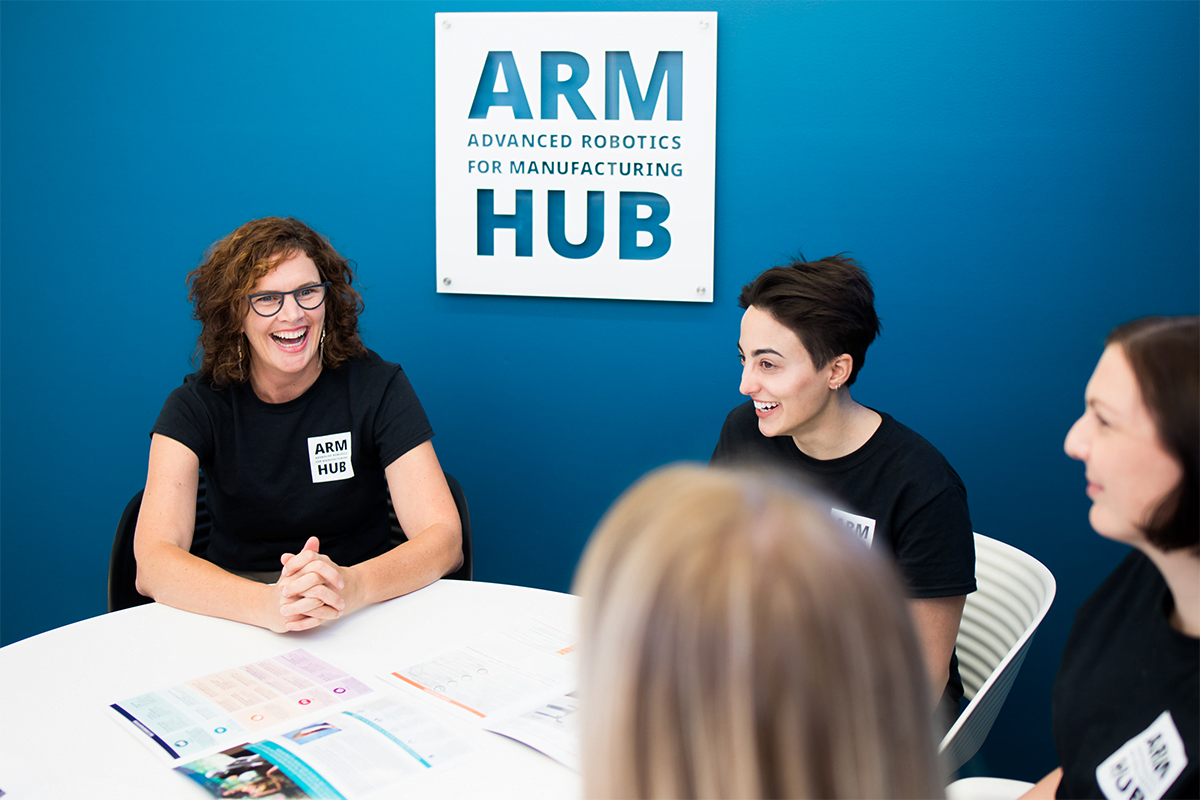
Wishlist for Design Robotics
ARM Hub grew out of the Design Robotics project, and Design Robotics forms a specialised group within ARM Hub. I hope that we continue to draw on our unique capabilities and generate a whole range of projects that transform industry and continue to collaborate in an exciting transdisciplinary manner. I also hope that we draw from the great diversity we have in the group: across genders and different cultural backgrounds. Even though we live the practice of collaboration every day, we forget sometimes that our ability to collaborate is our superpower. When we get to do interesting things in collaboration with other companies, they see it too.
Inspirations
I’m inspired by the many amazing women I get to spend my work and life with. In the cultural space, at the moment, I really, really admire the career and work of Margaret Atwood as well as Elizabeth Moss who features in Atwood’s Handmaid’s Tale. I do like Moss’s work beyond that too. I believe they’re really important icons for women.
The importance of visibility
In most of the environments I have worked there were and are a lot of women in leadership roles. But I have to say that dominantly female environments are as complicated as dominantly male environments. One reason is because as a whole, in the technology industries and in institutions including governments, women don’t often have the power networks and the financial networks. So, we were quite curtailed by that. But I did get to exist alongside a lot of women leaders.
It’s interesting that the opportunity for me to take leadership was only when I stepped outside arts and politics. Here I mean leadership where I’m running a company and have significant personal legal responsibilities. If you have a good idea, if you do the work … gosh! It’s been a lot of work. But if you just keep at it long enough and don’t crumble to that sense of imposter syndrome and learn to sit with the discomfort in all the new spaces you will enter, it is clear there is a critical role for boundary spanners who knit the whole picture together.
There was an article in the Courier Mail last week, with the headline “Tech won’t take your jobs”. It called me a tech expert and that made me very uncomfortable because I don’t see myself as a tech expert. I’m definitely a leader in the tech space but not a tech ‘expert’. While you can’t control what the media say, my first gut instinct was that the Courier Mail outed me. Of course, this is my conditioning to feel a kind of shame here, and it is the conditioning of a lot of women in their careers not to transgress boundaries and carefully manage such slippages. So, I think it is important to call out this conditioning and in response be the strong woman in unknown spaces because of what it will mean for future generations of women who will join such boundary spanning roles. I want them to know it is completely okay to sit in unknown and uncomfortable spaces, do the hard work and lead.
The change we need
I believe that anyone can look at Design Robotics as an example of watching women take on challenges with the support of a whole team. As a team we can provide diverse input that is valued across the different stakeholders and partners of the project. So, Design Robotics has become its own icon with its own value and merit. But beyond that, I still think that we women need to work together at the highest levels and demonstrate what it means to support women in the media and through political leadership. The reality is, how do we do it every day? How do we make sure that everyone has a voice given their position, gender and the knowledge they are bringing to the table? I have often not been in the position where I’ve been able to make decisions, but when I am able to influence decisions I like to check-in. When someone says, “Oh, you know she’s not ready for that opportunity”, I ask why?
Advice for younger women
Try to find those leadership opportunities and as soon as you can, take them. Be okay with big steps and not knowing everything. Leadership is about how you approach it, not what you know.
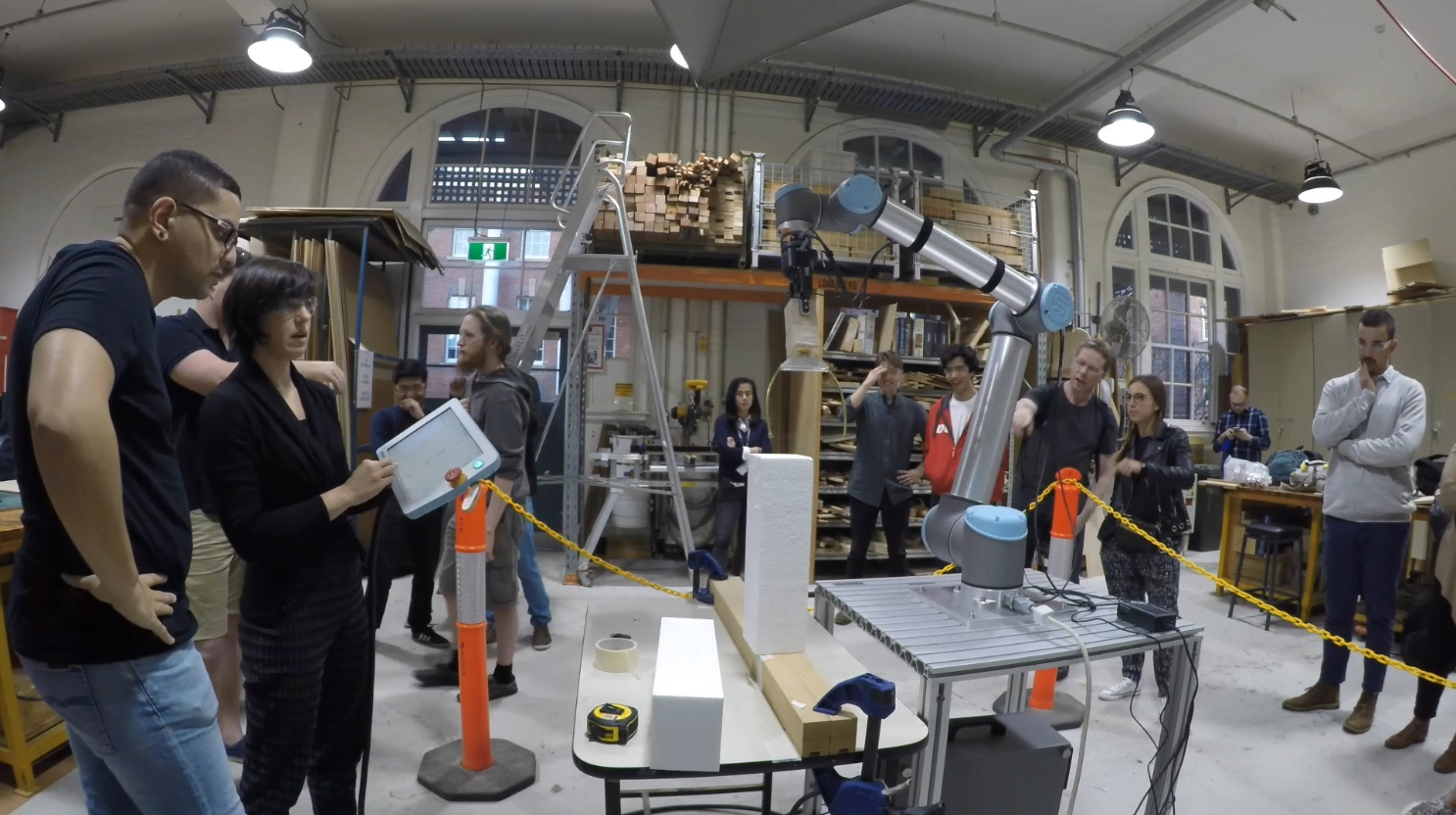
Kavita Gonsalves prepared this article. She is an architect who works across built environments, retail, graphics, design strategy, workplace design and research. Currently, she is a PhD candidate with QUT Design Lab and research assistant with Design Robotics. Her PhD research focuses on city-making, social justice, civic engagement, urban play, storytelling and digital placemaking.
A shout out to the Design Robotics, ARM and UAP teams, and with special thanks to Dr Glenda Amayo Caldwell, Dr Claire Brophy, Dr Jing Peng, Peta Portelli, Amanda Bell, Emma Lane and Amanda Harris.
Edited by Susie Ashworth.







